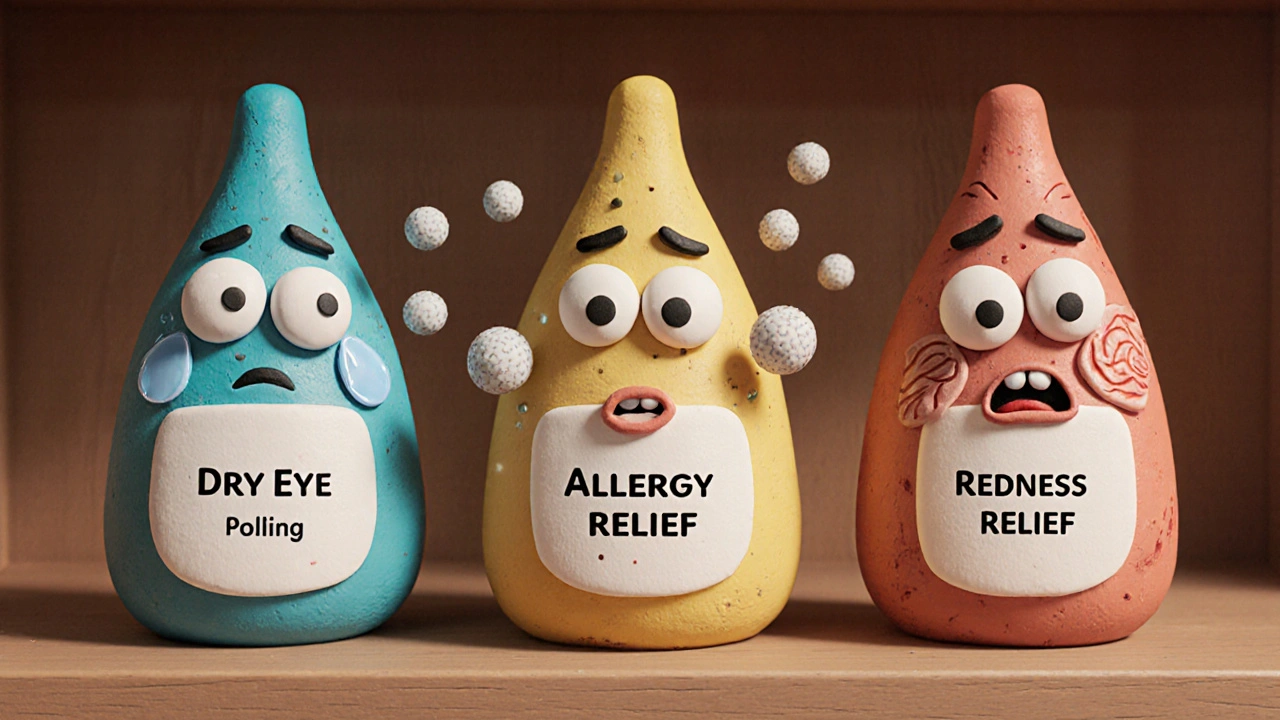Artificial Tears: What They Are, How They Work, and What You Need to Know
When your eyes feel gritty, burning, or just plain tired, artificial tears, over-the-counter eye drops designed to mimic natural tears and relieve dryness. Also known as eye lubricants, they’re one of the most common remedies for ocular dryness, a condition caused by poor tear production or rapid evaporation. Millions use them daily—not because they’re a cure, but because they offer quick, safe relief when your eyes just won’t stop feeling dry.
Not all artificial tears are the same. Some contain thickening agents like hydroxypropyl methylcellulose to stick around longer. Others include electrolytes to better match your natural tear chemistry. Then there are preservative-free versions, often sold in single-use vials, which are better for people who use drops more than four times a day or have sensitive eyes. If you’ve ever wondered why one brand works better than another, it’s usually because of these small differences in formula. And while they’re available without a prescription, choosing the right one matters. Using the wrong type can leave you feeling worse—or even cause irritation from added chemicals you didn’t need.
Artificial tears are often paired with other habits to manage dry eyes: blinking more often when staring at screens, using a humidifier in dry rooms, or avoiding fans and air conditioning that blow directly on your face. They’re not just for older adults—people who wear contacts, work long hours on computers, or live in dry climates use them too. Even after eye surgery, doctors often recommend them as part of recovery. The key is consistency. A drop or two every few hours can make a big difference over time.
What you won’t find in most artificial tears are steroids or antibiotics—those require prescriptions. These drops are meant for symptom relief, not treating infections or inflammation. If your dryness doesn’t improve after a few weeks, or if you notice redness, pain, or vision changes, it’s time to see a professional. Sometimes, dry eyes are a sign of something deeper, like Sjögren’s syndrome or an autoimmune condition.
Below, you’ll find real, practical advice from trusted sources on how to choose the right drops, when to avoid them, and what alternatives might help if artificial tears aren’t enough. Whether you’re new to this or have been using them for years, there’s something here that can make your daily routine easier—and your eyes feel better.
Learn how to pick the right over-the-counter eye drops for allergies, dryness, or redness - and avoid the common mistakes that make symptoms worse. Expert-backed choices for 2025.
Nov, 14 2025

